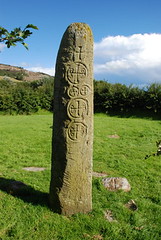Kolomenskoe – Tsar Residence In Moscow
Kolomenskoye is located in a wonderfully picturesque spot, on a high, craggy bank of the Moskva River, with a spectacular view of Moscow and the surrounding broad valleys and fields, and of the Nikolo-Ugreshki Monastery on the other side of the river. It is one of the oldest populated areas in what is today Moscow: people have been living here since the VIII Century B.C.
The protective walls of some ancient settlements have been preserved around Kolomenskoye and the nearby Dyakov ravine, and the ravine still shelters the mysterious age-old Zmeiny Kamen (snake stone). In pagan times, it formed the center of a religious temple, and its legendary magical powers are remembered even now. Magic rites are still celebrated around the stone today.
In the XIV Century, during the time of Ivan Kalita, this area became the favored suburban residence of the grand princes of Moscow, and later of the Tsar family, and eventually a palace with all the necessary trappings and accoutrements was built here.
In 1530, in celebration of the birth of Ivan, the long-awaited heir to Tsar Vassily III, construction began in Kolomenskoye of the Church of the Ascension, which would later be hailed as one of the most perfect and poetic churches, not only in Moscow, but in all of Russia. Young Ivan meanwhile grew up to become Tsar Ivan IV, known to history as Ivan the Terrible. The Church of the Ascension was one of the first to be built in the emerging style just coming into fashion in Russia at the time. It is believed the architect was an Italian, who also directed the building of the fortress wall that surrounded Kitai-Gorod (walled city) in Moscow.
The church in Kolomenskoye is a giant tower,
